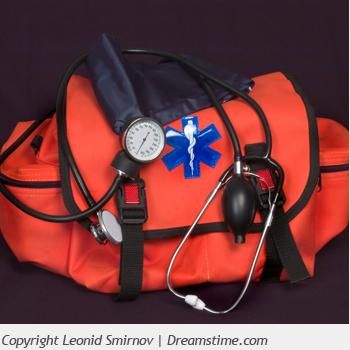New type of health care fills gap 

By Jan Stapleman | Office of Communications
Like residents of many rural counties in the U.S., people living in Eagle County suffer from gaps in health care services. One of those gaps wasn’t related to insurance or the Medicare “donut hole,” but the gap between emergency medical services and home health care.
Residents who needed follow-up care for just a few days after being released from a hospital had few options. Home health care wouldn’t apply. Those services usually are for longer-term care. Calling for an ambulance wasn’t the right solution either. Emergency services are designed to provide emergency care and transport patients to hospitals.
One resident – we’ll call her Mary – was being transported to an emergency room by ambulance five to six times a month simply because she couldn’t manage all her prescriptions correctly.
“We saw a need to serve patients who were in the gap,” said Chris Montera, chief executive officer of the Eagle County Health Service District. “So we worked on implementing the community paramedic program.”
Community paramedicine, also known as mobile integrated health care, started in rural areas of Nova Scotia, where patients often lacked access to primary care and transportation to doctor’s offices. In some cases, emergency medical technicians or paramedics were the only medical care available. Community paramedicine allowed paramedics with specialized training to serve as an extension of primary care in these rural communities.
In Colorado, Montera began working with the Colorado Department of Public Health and Environment to implement community paramedicine. He began a pilot program in Eagle County with a conditional license requiring frequent reporting and intense monitoring. Meanwhile, he worked with staff of the Health Facilities and Emergency Medical Services Division to institute a new Colorado category of health care in 2016 called Community Integrated Health Care Services. The Eagle County program is the first such rural program in the United States.
Individual counties regulate their emergency medical services agencies. The Health Facilities and Emergency Medical Services Division at the Colorado Department of Public Health and Environment regulates home health care agencies, licenses EMTs and paramedics, defines the responsibilities of each type of agency and ensures they stay in their own lanes. So figuring out how to allow emergency medical services to provide short-term home health care without encroaching on services provided by traditional home health care agencies was a challenge.
“We were a square peg trying to fit in a round hole,” Montera explained. “The division did a great job of figuring it out.”
“We had to solve the questions of ‘What is it?’ and ‘Where does it fit?’” said Elaine McManis, the division’s Home and Community Facilities Branch chief. “When we solved those questions, that put any contention to rest.”
McManis worked with Jeanne-Marie Bakehouse, chief of the Emergency Medical and Trauma Services Branch, to draft the rules for this new designation, focusing on staffing and administration. The division’s policy analyst, Alexandra Haas, translated the new concept into legalese, which became the community paramedic bill passed by the Colorado Legislature in 2016.
Paramedics must pass a national test to be endorsed as community paramedics. Montera worked with the International Board of Specialty Certification to develop that test and helped write one of the first community paramedicine curricula, now taught at more than 500 universities and colleges around the world.
The Community Integrated Health Care Services designation fills gaps of short-term care in the home, such as post-release care. It doesn’t continue on a long-term basis unless a patient has been refused by home health care or home health care is unavailable for other reasons. Since communities have varying needs, agencies must provide a needs assessment when they apply. When the department began taking applications, Eagle County Paramedic Services was first in line, becoming in 2018 the first Colorado agency to earn the new designation. Agencies in other counties are in the process of applying.
The Eagle paramedicine program has reduced the number of repeat visits to emergency rooms. Remember Mary? Rather than repeatedly transporting her to an emergency room, community paramedics now check in on her weekly to fill her daily medicine container and ensure she’s taking her meds correctly.
The Eagle program has begun co-responding, along with crisis clinicians, to suicide prevention calls. It’s working on developing a well-baby program. And it implemented a six-week, in-home alcohol detox service that provides medications to keep patients safe and connects them to meals from Project Angel Heart and mental health counseling.
Montera can’t help getting emotional when he talks about the way the community paramedicine program is helping Eagle County residents. He is continually reminded of its value by comments from those receiving care, such as the patient receiving help through the in-home detox program who said, “I didn’t know anyone cared about me.”
“We have amazing providers who carry out this work,” he said. “We care.”